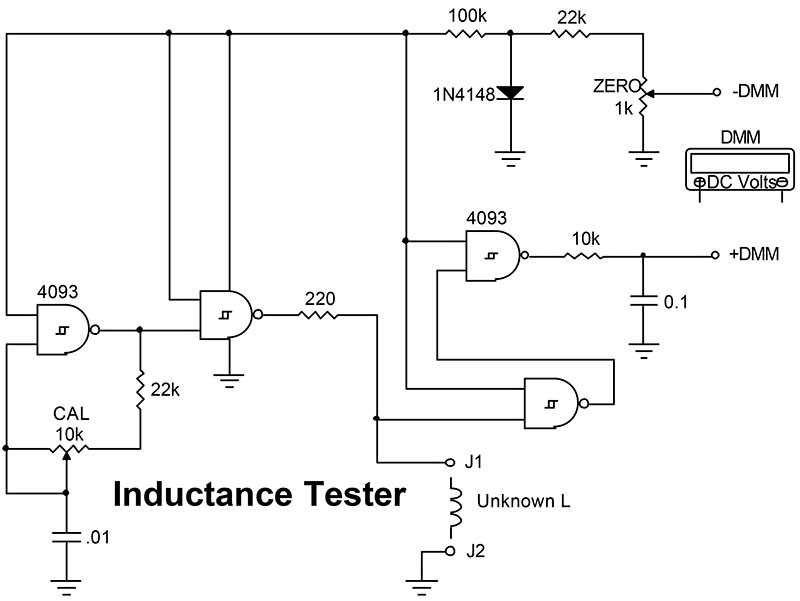With TJ Byers
Permeability Measured
Question:
I am a radio amateur and my aim is to build a 4:1 balun for antenna use, and would like to use some of the toroids I have in my junk box. How do I determine the permeability of toroids with unknown characteristics? My test equipment includes a 200 MHz scope, an MFJ antenna analyzer, and an RF signal generator.
Don Fared K7DRF
Answer:
Ferrites are roughly divided into two groups: iron powder cores and ferrite cores. Iron powder cores are usually color-coded and have permeabilities in the range of 1 to 75 (Table 1). Those with permeabilities up to 800 are usually made from nickel-zinc material and aren’t color-coded; over 850, the ferrites are mostly made from manganese zinc.
| Color |
Material Type |
Permeability |
| Tan |
0 |
1 |
| Blue |
1 |
20 |
| Red |
2 |
10 |
| Gray |
3 |
35 |
| Yellow |
6 |
8 |
| White |
7 |
9 |
| Black |
10 |
6 |
| Green/White |
12 |
4 |
| Blue/Yellow |
17 |
4 |
| Red/White |
25 |
25 |
| Yellow/White |
26 |
75 |
TABLE 1. Iron Powder Core Color Code.
Using an inductance meter, wind 10 turns of wire equally spaced around the core and measure the inductance (L) in mH. You can then calculate an AL value for the core using the formula AL = 10,000 x L, and compare the AL value to those of known cores of the same physical dimensions listed at http://amidoninductive.com/aai_ferritecores.htm. Table 2 shows the core types and the permeability of toroids that you’re likely to have in your junk box. If you’re looking to buy a toroidal core for a project, check out Alltronics (www.alltronics.com).
| Material Type |
Initial Perm. |
Max Perm. |
| 43 |
850 |
3,000 |
| 61 |
125 |
450 |
| 64 |
250 |
375 |
| 67 |
40 |
125 |
| 68 |
20 |
40 |
| 72 |
2,000 |
3,500 |
| 73 |
2,500 |
4,000 |
| J/75 |
5,000 |
9,500 |
| 77 |
2,000 |
6,000 |
TABLE 2. Ferrite Core Permeability.
Don’t have an inductance meter? Try the circuit below. It attaches to a DMM and reads out inductance in the range of 100 µH to 5 µH. To calibrate, set the DMM to the 200 millivolt range and attach a 1 mH choke across J1 and J2. Adjust the CAL pot so that the DMM reads 1.000.



Comments